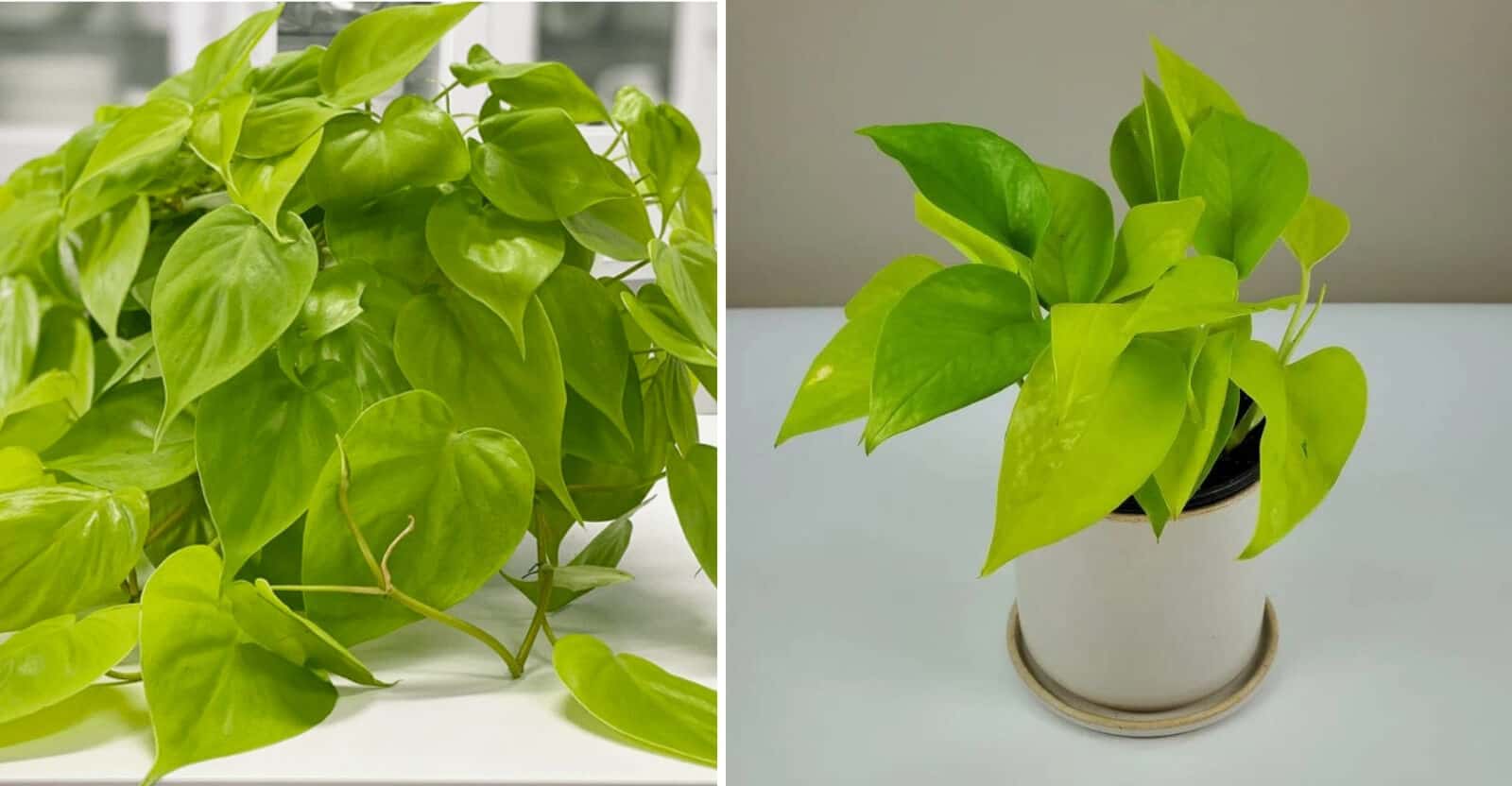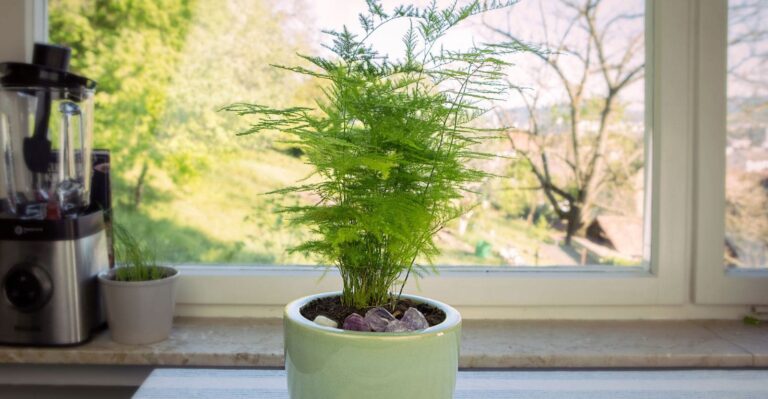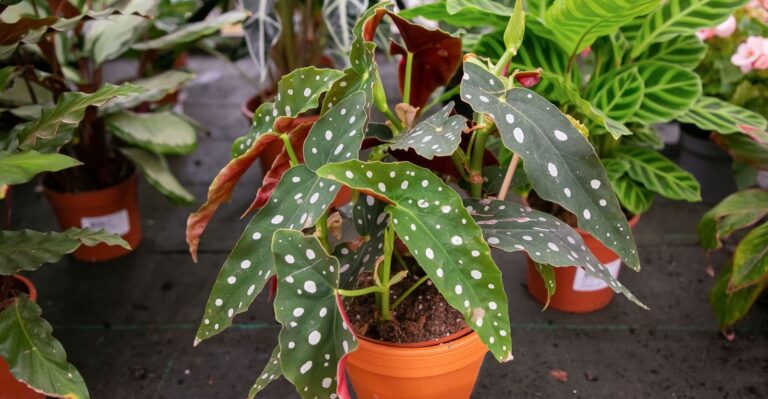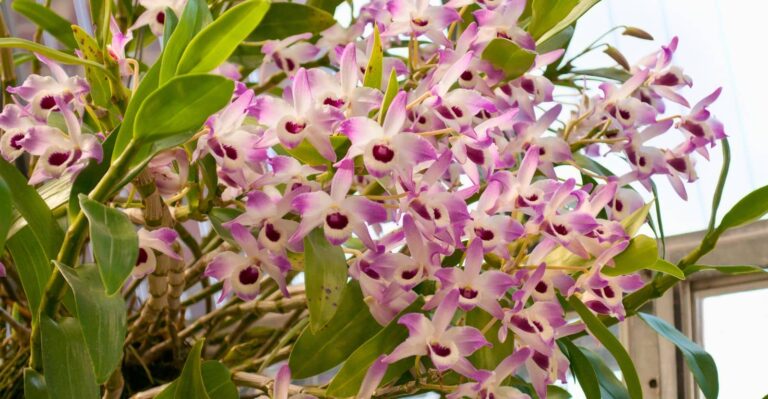Amazon has put together some great Home Gift Deals – save money and get your shopping done at the comfort of your home! Click here to see deals on Amazon
Lemon-lime Philodendron and neon pothos are houseplants with excellent lowlight tolerance and beautiful leaves. However, do you know the difference between lemon-lime vs. neon photos?
You have come to the right place if you’re shopping for these plants but can’t tell the difference. This article will share the most common differences and similarities between these two beautiful houseplants.
Some Products at Amazon to care for Lemon Lime Pothos:
- Captain Jacks Dead Bug Brew Concentrate
- Espoma Organic Potting Soil Mix
- Osmocote Smart-Release Plant Food
- Organic Perlite by Perfect Plants
Is lemon-lime pothos the same as neon pothos?
No, lemon-lime pothos isn’t the same as neon pothos. Although they have yellowish-green leaves, there is some crucial and distinctive difference between them.
The main difference is leaf texture, growth habits, and care requirements. But they have some similarities too that make it confusing to people.
Lemon-lime Philodendron: The lemon-lime philodendron is a member of the Araceae family. This plant requires little maintenance and has stunning elongated bright-hued leaves commonly used for decorating homes and businesses.
This is among the houseplants with air-purifying features. It keeps a more pleasant environment and cleaner air. It’s also called Philodendron hederaceum lemon-lime, Sweetheart Vine, Philodendron domesticum lemon-lime, and Malay gold.
Neon Pothos: This attractive houseplant grows well in tropical landscaping, like Hawaii or Moorea. The Neon in the name references the vivid neon green color of the hear-shaped plant leaves, making it an attractive feature of this plant.
In addition to looking good indoors, this plant also happens to be well suited for outdoor use. It’s widespread among places for decorations, including schools, hospitals, homes, and workplaces.
Difference between lemon-lime philodendron vs. neon pothos
There are several differences between these two indoor plants. These can range from tiny differences in bright leaves’ appearance to differences in aerial roots and petioles.
Here is a summary of the major differences between the two.
| Note | Lemon Lime Philodendron | Neon Pothos |
| Scientific Name | Philodendron Hederaceum Aureum | Epipremnum Aureum |
| Leaf | 4–8inches long heart-shaped leaf with reddish or pink texture on bright green foliage. | 7–10inches long light green neon pothos leaf |
| Flower | No flowering | White flowers, if given the proper environment |
| Growth Habits | Grows year-round | Only during the summer |
| Plant Height | Over 15 feet tall | 6–10ft medium-sized plant |
| USDA Zone | 9–11 | 10–11 |
Leaf color and texture
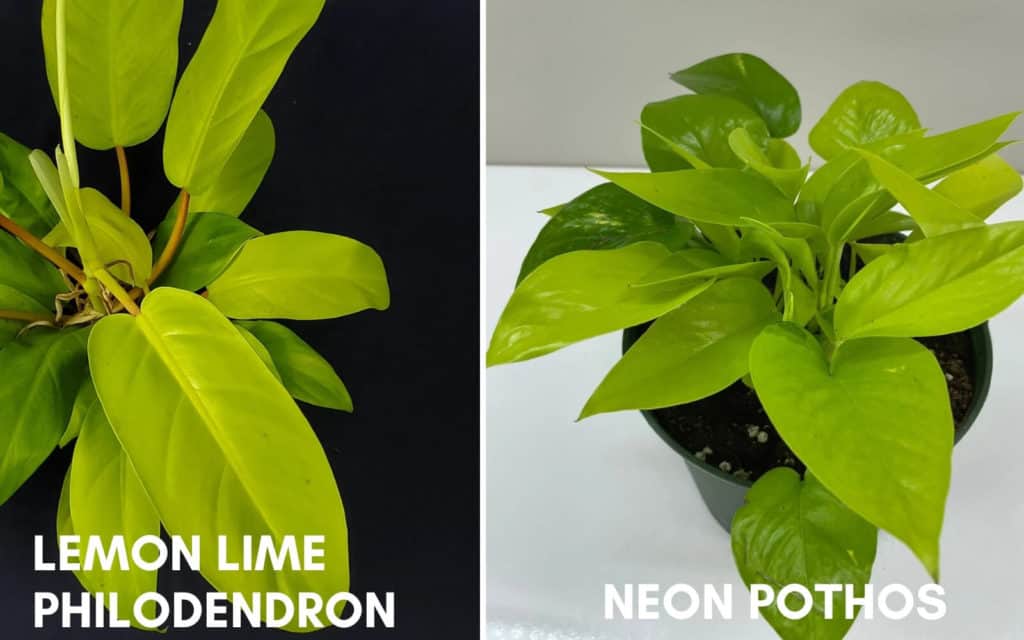
Lemon-lime philodendron and neon pothos most differ in leaf shape and coloring. Lemon-lime philodendron has a elongated rounded leaf with a slightly softer texture. Neon Pothos have larger and thick heat-shaped leaves and is often waxier to the touch.
A juvenile philodendron lemon-lime plant will grow new leaves that look more reddish or pink, while the neon pothos plant will produce light green leaves. You’ll also notice the stem of the lemon-lime plant is slightly thinner than the pothos plant.
The differences can also be seen in the petiole connecting with the base of each leaf. The neon pothos petiole is relatively straight compared to the lemon-lime philodendron, which is sharply curved.
Besides color and texture, leaf size is the second significant differentiation between the Neon pothos and lemon-lime. The lemon-lime pothos leaves will be 7 to 10 inches long, whereas the Neon plant’s leaves are considerably longer and less rounded.
Growth Rate
Philodendron plants and neon pothos are fast growth rate plants with little difference. The neon pothos has a single aerial root on each node, whereas lemon-lime philodendron has more roots, leading to a more textured appearance.
Due to fast growth, lemon-lime philodendron needs more regular trimming and shaping compared to neon pothos. You can prune and maintain them to be a smaller plants that you can grow indoors.
On the contrary, neon pothos can grow in water without soil. They have vibrant green color leaves with the ability to adapt and thrive in virtually all types of areas, including hanging baskets.
Growing Season
Lemon-lime Philodendrons thrive and grow in all seasons, while the Neon Pothos growth slows during winter and spurts in the warm summer season. A cool climate is unsuitable for Neon Pothos, as the plants’ leaves will turn black.
Lemon-lime philodendron is a compact plant, and any medium-sized planter is suitable for growing indoors. You may have to do regular pruning to keep it shaped and contain the size.
Neon pothos can be grown in soil and also just in water. Consequently, it’s a good choice for inexperienced gardeners or those who need easy maintenance plants.
Plant Height
When grown in a house, the Neon pothos height will range from six to eight feet, whereas outdoors, it can quickly reach 10 feet. However, the lemon-lime Philodendron leafy vine can grow above 15 feet in ideal growing conditions.
Pothos plants may not seem like they would bloom flowers, but they can blossom beautiful medium-sized flowers under the right conditions.
How do you care for a lemon-lime philodendron?
Philodendron lemon-lime and Neon Pothos share similarities, and their understanding of how they should be treated are similar. Here is some helpful information for taking care of these two houseplants.
Soil
Neon pothos and lemon-lime philodendron flourish in loose, fertile soil. The ideal composition for these plants is supposed to be moist soil and permitted to drain appropriately, allowing the roots to obtain sufficient oxygen. You can include organic materials, peat, perlite, and charcoal in the soil that plants like it.
To create the potting soil, mix one-part houseplant soil with peat moss and perlite to improve drainage. These houseplants don’t do well in compact soil that’s overly dense or physically heavy. You can use an aerator to loosen the dirt when planting it outdoor.
The slightly acidic pH level of soil between 6.0 and 7.0 is suitable for both plants. It’s essential to remember that you shouldn’t use soil from the garden when planting it indoors.
The soil is likely full of bacteria and other microorganisms that could introduce some diseases and pests to your new indoor plant.
Water
Lemon-lime and neon pothos flourish in tropical environments, making them best cared for by adequately watering them. Just be moderate in taking advantage of the moisture in your yard. Neon Pothos can withstand drought, while lemon limes require regular watering.
Both plants require watering once a week during the summer. However, there are too many variables to provide a precise watering number, so the best way to test the soil’s moisture level is to stick a finger in the ground. Try to keep the top inch of your garden moist or wet.
Be sure to wait while the topsoil dries out as it prefers well-draining soil. Due to stunted growth, too much water may cause the root rot or black-brown spots on the leaves.
Temperature
Both plants flourish in temperatures varying from 65°F to 80°F (18°C to 26°C) during the day. The minimum temperature at night shouldn’t drop below 55°F (12°C).
Any lower temperature will thrust your plant into dormancy, leading to reverse growth. To avoid the adverse effects of a sudden temperature change, it’s wise to avoid fluctuations in the temperature.
Place your houseplants away from the cold in the winter month and the heat during summer. Keep the plants away from the air-conditioning system during the warmest months.
Light
Lemon-lime and Neon pothos will survive in lowlight conditions, but they will certainly grow a lot better if you place them in a location that would receive partial shade or indirect sunlight.
If placed in a bright, filtered, or indirect light, your plant will create richer, deeper leaves. The plants require enough light not to be leggy and will do best in bright, indirect light.
This is particularly useful for all varieties of lime philodendrons, as these will grow small and only put out small leaves if they’re not exposed to bright light.
You can try adding grow light if your location doesn’t receive sufficient sunlight. The brown leaves are a sign of scorching due to direct light exposure.
Fertilizer
You must fertilize these plants once a month during the warm weather growing season of the summer months, especially if the leaves are starting to grow.
You can cut back or discontinue fertilizing in the wintertime as these aren’t heavy feeders and may use heavily diluted fertilizer only once every two months.
Using peat moss and formulating your fertilizer will give you the right nutrients for the proper soil mix. It supplies the plants with the ideal fertilizers mixture and keeps the perfect soil and composition.
You can use slow-release liquid fertilizer or organic fertilizers available from garden shops.
Pest and Diseases
Pests and diseases are common to most popular houseplants, but they don’t affect Philodendron lemon-lime or Neon Pothos. They can typically survive issues with mealybugs and scale infestations.
These problems are common among houseplants, but they don’t harm Philodendron lemon-lime or Neon Pothos. In most cases, you can resolve a mealybug and scale issue by applying neem oil weekly to your plant’s leaves. Browning leaf is a standard indicator of pest or disease problems to the plant.

How to propagate philodendron lemon-lime?
Lemon-lime is one of the easiest plants to propagate. It doesn’t require a lot of light or water, making it an ideal houseplant for busy or forgetful people.
- First, find a stem with at least one leaf and cut it from the parent plant. The best time to propagate through stem cuttings is from spring or summer. Select a healthy section of the plant for your cuttings, then choose a stem with no more than two to three nodes. Don’t choose a branch that has a diseased leaf.
- Second, place the leaf in water or potting soil and wait until roots start to form before planting your new pothos in soil or potting soil.
- Third, make sure you keep your new pothos watered regularly so that it doesn’t dry out and start dying off again.
- Finally, to attain the highest possible humidity level, keep the soil as moist as possible. Place it where the plant can receive indirect bright light with room temperature above 70°F (21°C) to facilitate rapid growth in roots.
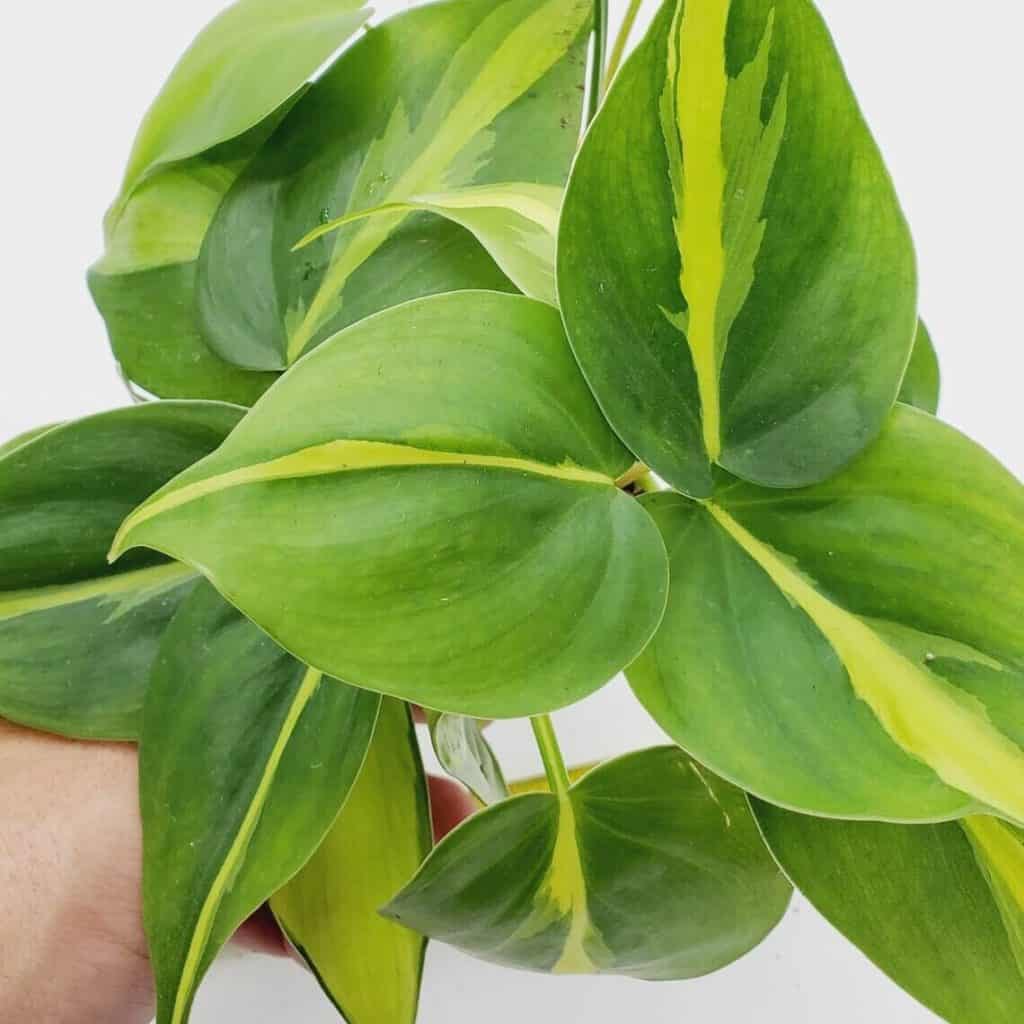
Lemon-lime philodendron vs. Brasil
The leaves of the lemon-lime philodendron and philodendron Brasil have very similar structures with heart-shaped leaves but differ based on the coloring.
The lemon-lime philodendron will have a uniform lime-green leaf, but the Philodendron Brazil leaves will have a wide variety of light green to dark green shades.
Both Philodendron Lemon Lime and Philodendron Brazil have very similar leaf shapes, and it’s just the different leaf coloring.
Is lemon-lime philodendron toxic?
Lemon-lime philodendron is a stylish plant with fancy foliage and beautiful leaves, but it’s also poisonous to dogs and pets. The leaves contain calcium oxalate crystals, which, when ingested by dogs or pets, can cause kidney damage.
Other symptoms include vomiting, diarrhea, chest pain, oral irritation, and loss of appetite. Because the damage is irreversible, you should seek emergency veterinary treatment immediately.
Conclusion
The Lemon-lime philodendron and Neon pothos plants are incredible tropical plants famous for their heart-shaped leaves. It can be grown in various house locations and gardens, including baskets, flower beds, and draining pots. You can find lemon lime philodendron for sale from several online garden stores.
After reading the article, you should have a clear picture of the differences between philodendron Lemon-lime and Neon pothos and the correct way to care for it. We hope it helped you decide which plant will best fit your home.

Don’t forget to share this post

